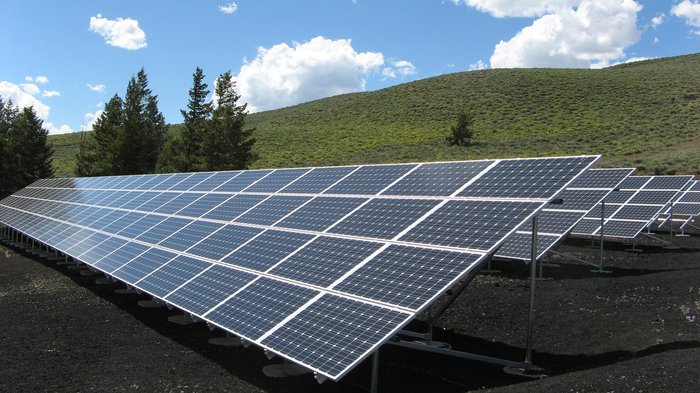

At this point, you probably understand the difference solar energy makes to our planet.
You’ve probably also toyed around with the idea of going through with an installation yourself, especially when passing through freeways and seeing those large-scale solar farms.
But what is a solar farm? What is its purpose and how can it help the environment and you?
Solar farms are our future, there’s no denying that. Learning exactly how can empower you to join the clean energy movement.
So keep reading to learn about what solar farms can do for your community and the environment!
Contents
A solar farm is a grouped collection of solar panels. Certain farms may also be called “utility-scale solar applications” by industry/governmental professionals. “Community solar” farms are typically meant to power many households and local commercial properties within or around residential areas.
The common standard for a solar farm’s peak output is about one megawatt of power. This is enough power to provide for about 200 households. However, there are many solar farms that produce much more energy.
Because of this, solar farms are particularly useful for facilities, residential areas, and collections of commercial properties with high energy demands. Some of these areas include:
Of course, you have most likely heard of solar energy’s general benefits, primarily about its usage of clean energy. By using solar energy, users can rest easy knowing that their lifestyle imparts a significantly lower carbon footprint. However, here are a few key benefits of using energy from solar farms instead of installing panels yourself:
It’s natural to be skeptical about the benefits of buying solar generated from a solar farm than from panels on your own roof. But on top of providing renewable energy for your entire community, solar farms can create jobs and lower overall cost of living!
But not every community is ready to rally up for this effort yet. Meanwhile, you can still invest in solar panel installation since it will still be much cheaper and eco-friendlier than using electricity from fossil fuels!
Whether at a utility scale or at a community level, solar farms sell solar typically only sell energy to utility companies or wholesale utility buyers. These companies/buyers then sell and distribute this power to users that need it.
The cost will vary based on the area’s sunlight hour availability, location, etc. But in general, commercial solar installations usually cost about $1/watt. Residential solar installations cost more, about $2-4/watt.
At some point, our world is due for a change – one that involves clean energy, lower utility bills, and lower unemployment rates. So if the prospect of solar farms sounds great to you, then at least consider making the switch yourself even without a solar farm!
This article is meant to help you learn about solar farms and their benefits. If it did, then check out the rest of our posts! We have plenty of information on changes that have a positive environmental impact for readers just like you.
Pay-Per-Click (PPC) is the most popular way of digital marketing that allows a business to…
Investing in Gurgaon’s real estate market presents exciting opportunities, but a common dilemma for investors…
The year 2020 and the pandemic threw a wrench into everyone's plans. Companies that were…
AI is successful in boosting the productivity of organizations while helping them save cost and…
Suppose you battle back discomfort or other associated ailments due to sitting for lengthy periods…
In November 2023, investor Maksym Krippa acquired the Parus Business Center, redefining the commercial real…